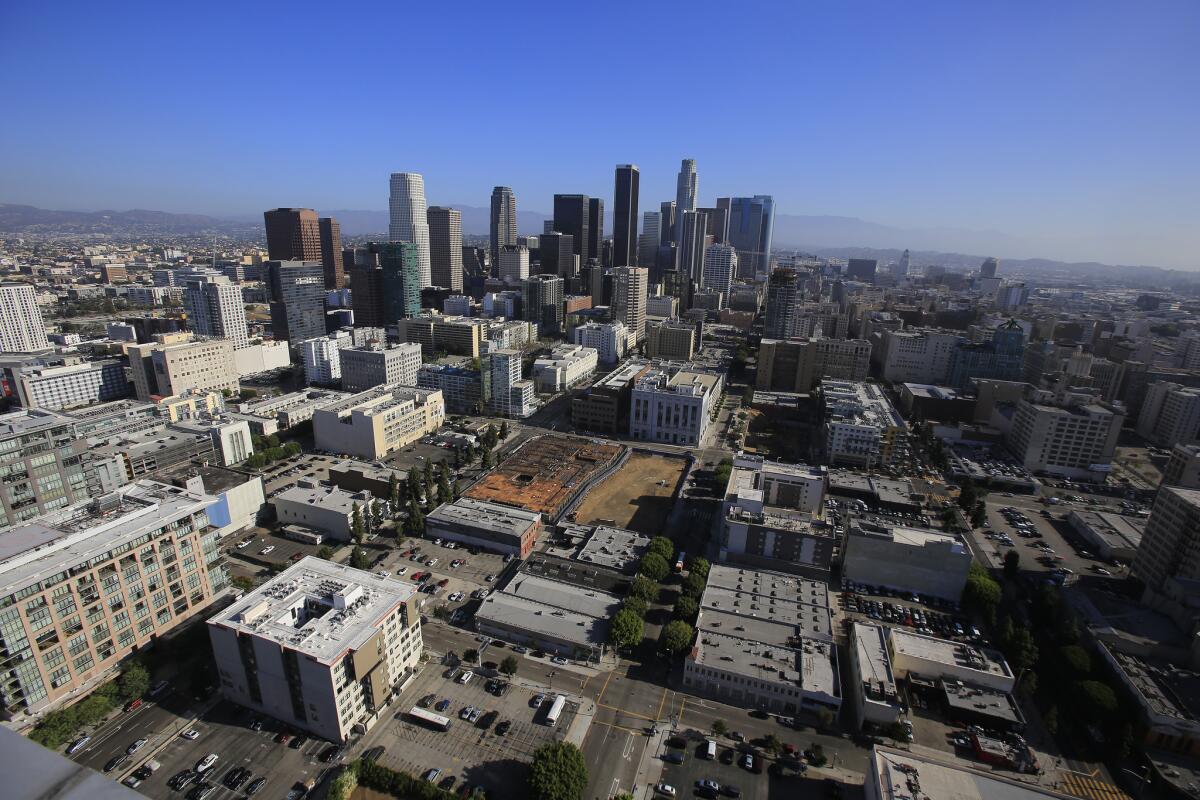Hot, stagnant weather in 2014 blamed for more bad air days in the Southland

- Share via
Hot, stagnant weather in Southern California pushed smog levels above federal health standards on 94 days in 2014, up from 88 day last year, regional pollution regulators said.
This year had been shaping up to be cleaner than 2013, officials with the South Coast Air Quality Management District said -- in keeping with the improving pollution trend of the last several decades. But a strong high-pressure system developed late last month and hung over the region for weeks. It brought strong inversions, weaker winds and higher temperatures that concentrated ozone, the lung-damaging gas in smog, near the ground and caused bad-air days to linger well into October, officials said.
“That’s what nudged us higher,” said Joe Cassmassi, planning and rules manager for the air-quality district, which includes 16.7 million people in Los Angeles, Orange, Riverside and San Bernardino counties and has the nation’s worst ozone pollution. “Warmer, dryer years tend to be pretty smoggy.”
The weather-driven dip in air quality this year, though, is not a significant departure from the decades-long trend of smog reductions caused by declining emissions, Cassmassi said.
Ozone, which builds up in the summer, is a corrosive gas that forms when pollutants from cars, trucks, ships, power plants and refineries bake in heat and sunlight. Breathing it inflames the lungs and airways, can worsen respiratory illnesses, trigger asthma attacks and lead to hospital and emergency room visits and premature deaths.
Ozone pollution is worst in communities near the San Bernardino and San Gabriel mountains. The sea breeze carries emissions from across the region inland. The pollutants cook throughout the day, generating the highest ozone concentrations on hot, sunny afternoons.
The San Joaquin Valley, which also suffers from some of the nation’s worst smog, has seen a similar jump in bad-air days this year. The valley logged 88 days in violation of federal ozone standards, up from 82 in 2013. Local air regulators attributed the increase to extreme heat that extended the smog season into October.
A region violates the U.S. Environmental Protection Agency’s limits when at least one of its air quality monitors detects ozone concentrations of more than 75 parts per billion over an eight-hour period.
Barbara Finlayson-Pitts, a chemistry professor at UC Irvine who directs the research institute AirUCI, said Southern California’s upswing in bad-air days this year “is likely to be a statistically insignificant blip on a declining ozone trend.”
In the 1970s and ‘80s, the South Coast basin often saw over 200 bad-air days a year.
Peak concentrations of ozone in the South Coast basin continue to decline dramatically. They are about one-third of what they were then, Finlayson-Pitts said, even as the population has grown and the number of vehicle miles traveled has doubled.
For more environment news, follow @tonybarboza
More to Read
Sign up for Essential California
The most important California stories and recommendations in your inbox every morning.
You may occasionally receive promotional content from the Los Angeles Times.











